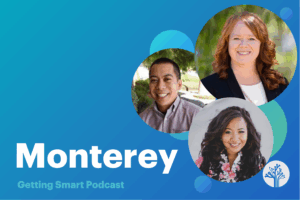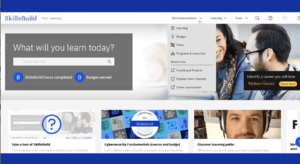Open Badges Are Unlocking the Emerging Jobs Economy

Higher education providers are producing more graduates than ever before, yet fewer than half of new graduates or employers believe that they are adequately prepared for entry-level positions (see Georgetown CEW report). One missing link in the employment chain is weak signaling–employers don’t efficiently pinpoint skill gaps and individuals don’t have efficient ways to share demonstrated skills.
In a new white paper, Open Badges Are Unlocking the Emerging Jobs Economy.
Pearson makes the case that badges are an efficient way to signal demonstrated knowledge and skill to prospective employers. They also predict that “Employers will use the verified information gleaned from skill-based badges to identify qualified candidates and to communicate skill gaps to education providers.”
Badges as a credentialing and market signaling strategy may be new to some, but Jarin Schmidt has been helping to credential expertise worldwide for more than 15 years with Pearson VUE. As product lead for Acclaim, Schmidt acknowledges that we’re in the early days of micro-credentialing but sees badges as a big opportunity for individuals to create dynamic online portfolios of verified achievements.
Open badges. In 2011, Mozilla, HASTAC and the MacArthur Foundation united a community of collaborators around an open technical standard for any organization to create, issue, manage and verify digital badges. In 2013 they released the first version of their the Open Badges Infrastructure.
Badges are a visual representation of demonstrated knowledge or skill. Open badges use metadata attached to badge images to provide additional information–who issued it, how and when it was earned.
The open standard creates a bit of a free for all–anyone can issue a badge for anything. Because Pearson Acclaim supports improved employability, their badges represent critical job skills as defined by employer groups and assessed in reliable (often high stakes) ways and shared in a secure fashion.
Acclaim. The badge service from VUE captures and hosts badge metadata for client organization that dictate where and when badges are shared. Acclaim can populate badges on Linkedin profile. Badge recipients can embed and promote badges on personal website or Facebook. Schmidt said that people are twice as likely to appear in a search if they have technical certifications in their profile.
VUE is issuing badges for the Adobe Certified Associate (ACA) via the Acclaim badge platform. “ACA candidates excel in the digital media world and appreciate having proof of their skills in a format that can be managed and shared online,” said Melissa Jones, world wide education program manager for Adobe. “By representing the ACA certification as a badge through Acclaim, we empower our students to take credit for and manage their achievements digitally.”
Another issuer is ISACA, an association of IT governance professionals. Credentials are issued for information security and financial auditing. Pearson also certifies Microsoft Office skills.
Schmidt said badging is most common in IT and is growing in health, retail, and corporate training with lots of potential in state regulated occupations–police, realtors, accountants–and any field with continuing education requirements.
With Karen Cator, Digital Promise, Getting Smart recently published a paper, Preparing Teachers for Deeper Learning, suggesting that micro-credentialing is the best approach to preparing and developing teachers for dynamic learning environments.
As noted a couple years ago, we think Badges Will Be Big. They provide an efficient way for employer groups to signal requirements for job clusters and a way for learners to accumulate and share a growing portfolio of skills. A platform like Acclaim makes it a credible information exchange for both parties.
For more, see:
- Career Education: Even College Grads Should be Employable
- Engagement & Employability Driving Next Gen Platforms
Pearson is a Getting Smart Advocacy Partner.







0 Comments
Leave a Comment
Your email address will not be published. All fields are required.